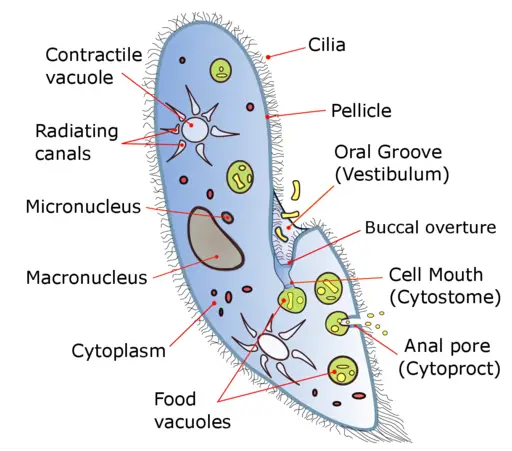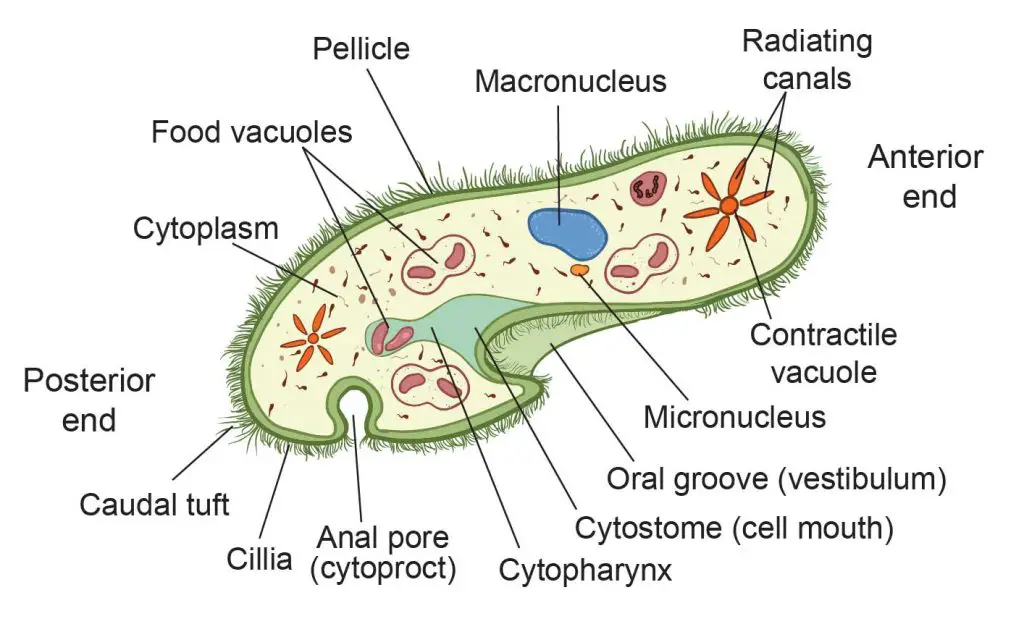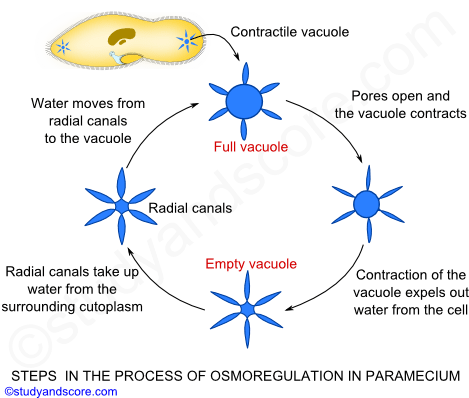Function of Contractile Vacuole in Paramecium
Eukaryote cells include a variety of membrane-bound structures collectively referred to as the endomembrane system. It performs all life function like intake of food materials excretion metabolism.

Contractile Vacuole Function Role What Is A Contractile Vacuole Video Lesson Transcript Study Com
Historically protozoans were regarded as one-celled animals because they often possess animal-like behaviours such as motility and.
. Carbon oxide from lungs to tissues C. They remove gaseous wastes through stomata in leaves and lenticels in the stem. In bisected cells the posterior half-cell regenerates anterior structures including the OA but also other structures such as the contractile vacuole and the cellular anus cytopyge.
Paramecium is powered by a dual-core CPU Macronucleus and Micronucleus. Contractile vacuole and food vacuole which do not exist in human cells. The contractile vacuole can still regenerate in enucleated posterior half-cells Stevens 1903.
It is a eukaryote that has developed cellular organelles with a nucleus enclosed inside a nuclear membrane. Various cell organelles such as mitochondria endoplasmic reticulum and Golgi bodies are present. They remove the wastes through the body surface contractile vacuole specific body pores.
Store various substances including waste products Maintain osmotic pressure. In multicellular organism different kinds of tissues perform different function and have division of labour. Members of the phylum protozoa use the contractile vacuole.
There are two contractile vacuoles present close to the dorsal side one on each end of the body. It is a ciliated organism with cilia present throughout the body of the organism. Tartar 1956 but this does not necessarily mean that.
Contractile vacuole and food vacuole. Oxygen to the lungs. Paramecium is a single-celled organism resembling in shape to that of the sole of a shoe.
They are filled with fluids and are present at fixed positions between the endoplasm and ectoplasm. Anton Von Leeuwenhoek first saw and described a live cell. They have two types of nuclei which differ in their shape content and function.
Single membrane sac filled with liquid or sap water sugar and ions In animal cells vacuoles are temporary small in size and few in number In plant cells vacuoles are large and more in number May be contractile or non-contractile Functions. There is inward pocket near the base of flagella called a reservoir where contractile vacuole dispels excess water. Plants lack specific organs for excretion.
Other solid wastes are removed by the shedding of leaves peeling of bark and falling of fruits. Food vacuole store and digest food while contractile vacuoles excrete unwanted materials from the cell. Food vacuoles and contractile vacuoles Covering membrane of sap vacuole is called tonoplast The fluid filled content of the vacuole is called cell sap or tonoplasm Recently digestive enzymes are reported in vacuole of plant cell Vacuoles-store house of.
It is a rigid outer cover of the plant cells made of cellulose. To remove excess food B. Sensitivity in Living Organisms.
The most unusual characteristic of paramecia is their nuclei. Protozoa singular protozoon or protozoan plural protozoa or protozoans is an informal term for a group of single-celled eukaryotes either free-living or parasitic that feed on organic matter such as other microorganisms or organic tissues and debris. Cell is the structural and functional unit of life.
The main function of blood in mammals is to transport. It contains a contractile vacuole which removes excess water. Figure 815 A parameciums contractile vacuole here visualized using bright field light microscopy at 480x magnification continuously pumps.
It gives the plant cell a definite shape while providing mechanical support and protection. Cell wall also allows water gases and other materials to pass through it. In unicellular organism amoeba paramecium yeast bacteria single cell performs all the essential functions of life.
Simple compartments called vesicles and vacuoles can form by budding off other membranesMany cells ingest food and other materials through a process of endocytosis where the outer membrane invaginates and then pinches off to form a vesicle. Paramecium consists of two types of vacuoles. Excretory materials from tissues B.
Paramecium under the microscope. Paramecium also consists of two types of vacuoles. This recognition function is very important to cells as it allows the immune system to differentiate between body cells called self and foreign cells or tissues called non-self.
Digested food from all the body tissues D.

Paramecium Classification Structure Function And Characteristics

How Does Paramecium Regulate Its Water Content Dr Biology Questions And Answers
What Is The Function Of The Contractile Vacuole What Would Happen If The Cell Didn T Have This Structure Quora

Paramecium Respiration Excretion Osmoregulation And Response To Stimuli Study Score
Comments
Post a Comment